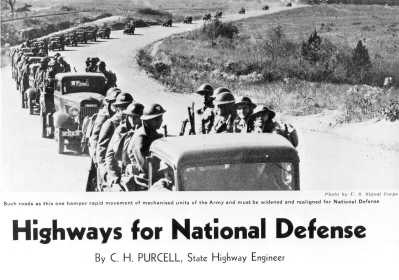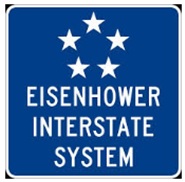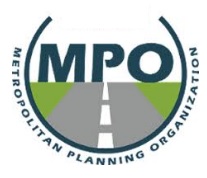Defense Highways, Interstate, Metropolitan Planning Organizations and Emergency Medical System and Highway Safety

Defense Transportation Network
Dwight David Eisenhower had been a General in World War II. Transportation across Europe had been difficult. The conception of the need for the Interstate highway system in the United States was because of Eisenhower’s WWII experience. As a result, the Interstate was designed with defense as a first priority and commercial accommodation as the second priority.
The defense highways – Strategic Highway Network (STRAHNET) is embedded within the Interstate as an overlay on the map but also includes major arterials to and from transportation hubs, city centers and strategically sensitive locations.
Defense – Offense…. it just depends on who is controlling it – whatever it is.

The Interstate Highway System
In 1953 when Dwight David Eisenhower was elected to the Presidency, his first priority was to connect states together by building an interstate highway system. In 1956, Congress passed and Eisenhower signed Federal-Aid Highway Act of 1956. Dedicated funding for the highway system was included in the legislation. Originally, Interstate was named the National Highway Defense System (NHDS). In 1990, it was renamed the Dwight David Eisenhower National System of Interstate and Defense Highways under an act of Congress signed into law by President George H.W. Bush.
Source: History Net, Logan Thomas Snyder, President Dwight Eisenhower and America’s Interstate Highway System

Metropolitan Planning Organizations (MPO)
The Federal-Aid Highway Act of 1962 came with the requirement for urban transportation planning for metropolitan areas – defined as having a population of 50,000 or greater. Evolution of the comprehensive planning process:
“By July, 1965, all the 224 existing urbanized areas had an urban transportation planning process underway. At that time, qualified planning agencies to conduct the transportation planning process were lacking in many urban areas. Therefore, the Bureau of Public Roads (predecessor to the Federal Highway Administration) required the creation of planning agencies or organizational arrangements that would be capable of carrying out the required planning process. Hence, Metropolitan Planning Organizations (MPOs) quickly came into being because of the growing momentum of the highway program and the federal financing of the planning process.”1
The Federal Highway Administration defines MPO2 as follows:
1) Regional policy body, required in urbanized areas with populations over 50,000, and designated by local officials and the governor of the state. Responsible in cooperation with the state and other transportation providers for carrying out the metropolitan transportation planning requirements of federal highway and transit legislation. 2) Formed in cooperation with the state, develops transportation plans and programs for the metropolitan area. For each urbanized area, a Metropolitan Planning Organization (MPO) must be designated by agreement between the Governor and local units of government representing 75% of the affected population (in the metropolitan area), including the central cities or cities as defined by the Bureau of the Census, or in accordance with procedures established by applicable State or local law (23 U.S.C. 134(b)(1)/Federal Transit Act of 1991 Sec. 8(b)(1)). (FHWA2)
Source: Association of Metropolitan Planning Organizations
1 Association of Metropolitan Planning Organizations
http://www.channelingreality.com/NAU/IVHS/MPO_Brief_History_AMPO.pdf
2 Department of Transportation, Federal Highway Administration, Glossary http://www.fhwa.dot.gov/planning/glossary/glossary_listing.cfm?TitleStart=M

Highway Safety & Emergency Services
The Highway Safety Act of 1966 (Public Law No. 89-564), enacted by Congress on September 9, 1966. The primary purpose of this legislation was to provide for a coordinated national highway safety program through financial assistance to the States…In his 1966 State of the Union Address, President Lyndon B. Johnson proposed the highway safety legislation to the Congress as well the formation of a new executive agency, the Department of Transportation. …each state must “have a highway safety program approved by the [Secretary of Commerce] . . . in accordance with uniform standards to be approved by the Secretary.”
…The legislation addressed a broad range of issues: driver education; licensing; pedestrian performance; vehicle registration and inspection; traffic control; highway design and maintenance; accident prevention, investigation, and record keeping; and emergency services.
Sources:
DOT – Federal Highway Administration
House of Representatives, Historical highlights, The Highway Safety Act of 1966





